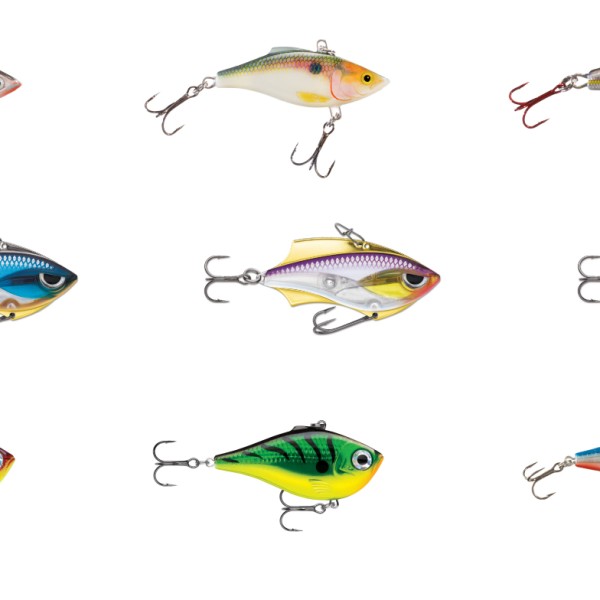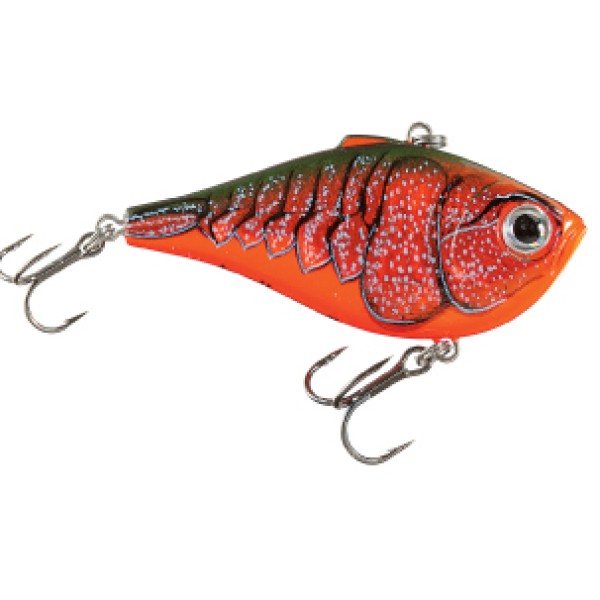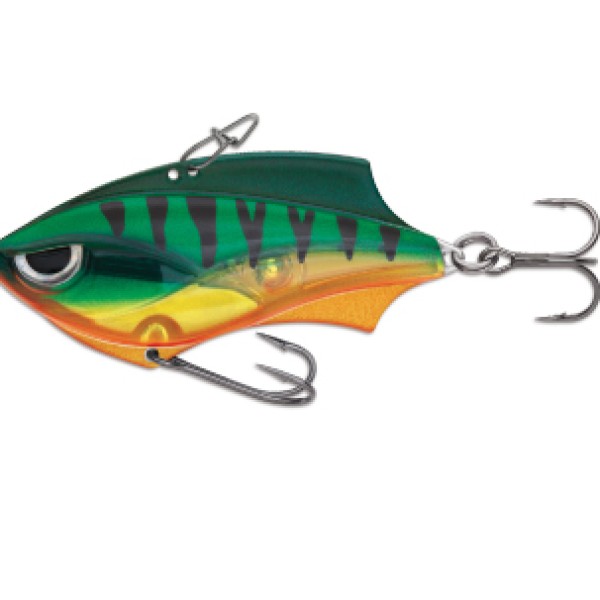Beginner’s Guide to Ultralight Fishing with Soft Plastic Lures
When I first started ultralight fishing, I was searching for an affordable, versatile, and effective way to catch fish. That’s when I discovered soft plastic fishing lures. Whether you’re just dipping your toes into ultralight fishing or looking for tips to up your game, soft plastics are a fantastic option for beginners. They come in an incredible range of shapes, colors, and styles, making them not just a tool, but a canvas of creativity for anglers.
What I love most about fishing with soft plastics is their versatility. You can fish them in small streams, deep waters, or even target specific species like trout or bass. They are also incredibly affordable, especially compared to other lures, and their durability means you can catch fish after fish without breaking the bank. These innovative lures have come a long way since their creation in 1949.
While early soft plastics were rigid and limited in action, today’s lures are designed with lifelike movement, materials, and even scents. Over time, soft plastics have become a staple for anglers of all skill levels, making them the best option for beginners to ultralight fishing. Stick around to learn the techniques, benefits, and how to rig these lures like a pro.
Why Soft Plastic Fishing Lures Are Perfect for Ultralight Beginners
The Evolution of Soft Plastic Fishing Lures
Soft plastic fishing lures have such a rich and fascinating history, and it’s amazing to think about how far they’ve come since their creation. The story starts in 1949 when the Creme Lure Company introduced the world to the first soft plastic lure, the "Creme Wiggle Worm." This simple yet effective design, crafted from vinyl, oils, and pigments, paved the way for the modern soft plastic we know today. Fast forward to 1967, Tom Mann from Mann’s Bait Company brought us the "Jelly Worm," which stood out for its intriguing use of fruit scents. Then in 1972, Mister Twister truly changed the game with their "Curly Tail" worms, adding life-like fluttering action that set a new standard for lure motion. These pioneers laid a strong foundation for something truly special.
Over the years, innovation continued, and one iconic moment was in the late 1990s when Gary Yamamoto launched the Senko. That soft plastic bait, with its simple stick-style design, has since become a staple for bass anglers worldwide due to its versatility and unmatched action.
Berkley, today, is synonymous with fishing innovation, particularly when it comes to scented lures. Beginning with PowerBait in 1987 and later the revolutionary Gulp! in the early 2000s, Berkley has mastered combining irresistible scents and flavors with durable soft plastics. Their ability to produce biodegradable options and advanced scent dispersion kept them at the forefront of the industry. These features make Berkley’s soft plastics a must-have for anglers, including those just beginning their ultralight fishing adventures.
Another household name in soft plastics is Strike King, a brand known for quality and variety. They’ve developed ultralight-friendly lures like finesse worms and Mini Pro-Buzz lures that deliver consistent results regardless of the fishing conditions. Their reliability and versatility continue to win over both novice and seasoned anglers.
Finally, Z-Man has cemented itself as a modern favorite by using cutting-edge ElaZtech material, known for its flexibility and durability. These lures are particularly popular for ultralight fishing, where finesse and motion are key. Their ability to last through multiple catches ensures Z-Man lures are not just effective but also cost-efficient.
Each of these brands brings something unique to the table, but one thing is clear: soft plastic lures are here to stay. Whether you’re fishing for bass in small streams or testing your luck on trout, these lures offer versatility, affordability, and incredible action.
Why Soft Plastics Are a Game-Changer for Ultralight Fishing
When it comes to versatility, nothing beats soft plastic fishing lures. These little wonders can be rigged in countless ways to cover the entire water column, whether you're fishing shallow for largemouth bass or targeting deeper water species. Want to keep your lure near the surface? Rig it unweighted, cast it out, and watch the subtle, natural motion draw fish in. Need to get deep? Just pair it with a heavier jig head, and you’re ready to reach those bottom-dwellers. Choosing the right jig head size and weight is a key part of soft plastic lure techniques. This adaptability makes them one of the best options for beginners learning how to read the water and target specific species like trout or bass.
Beyond their flexibility, soft plastics are affordable, which is music to the ears of anyone new to ultralight fishing. Since packs often come with multiple lures, they offer fantastic value. Many brands, like Z-Man with their 10X Tough ElaZtech lures, have created incredibly durable options that can withstand catch after catch. I’ve had single lures last through 50 fish! Talk about bang for your buck.
For beginners, soft plastics are a guilt-free way to experiment with techniques like rigging, casting angles, or choosing jig heads for small streams. It’s an easy and budget-friendly way to learn the ropes of fishing with soft plastics while boosting your chances of landing that trophy bass.
Understanding Soft Plastic Lures for Ultralight Fishing
When I first started fishing with soft plastic lures, I remember feeling a little overwhelmed by the options. But don’t worry! The variety isn’t something to stress about—in fact, it’s what makes these lures such a joy to use. Soft plastic lures are incredibly versatile, offering something for every fishing condition and target species. Whether you’re angling for largemouth bass, trout, or other favorites, understanding their anatomy and types can help you use them with confidence.
Breaking Down Soft Plastic Anatomy
Soft plastic lures are designed with key parts that influence their action, durability, and performance. Here’s what each part contributes:
- Head/Nose: The flat head ensures the jig head (your hook and weight) sits flush for smooth rigging and a streamlined presentation in the water.
- Body: This is the main section where the hook sits. A flexible body allows the lure to move naturally, enticing nearby fish.
- Belly: Some lures have a defined belly, especially in paddle tail and jerkbait designs. It affects the lure’s weight distribution and action.
- Tail: A soft plastic’s tail is often responsible for its action. Tails come in varying shapes, from curl tails to paddle tails, each suited to specific situations.
- Tail Wrist: This narrow part connects the tail to the body and plays a role in how the tail moves in the water.
Types of Soft Plastic Lures
Soft plastics shine in their variety! Each type of lure is designed to mimic natural prey, and when paired with the right jig head and retrieval technique, they perform beautifully.
Curl Tails

If you’re new to ultralight fishing, curl tails are a fantastic starting point. Here’s why:
- The constant action mimics an injured or resting prey, which fish find irresistible.
- Perfect for fishing in calm conditions or when only subtle movements are needed.
Paddle Tails

These are another all-around favorite, especially for anglers targeting bass or trout:
- The paddle-shaped tail “swims” naturally, creating a lifelike vibration that draws attention.
- They’re highly versatile, working well across different speeds and water depths.
- Ideal for beginners who want a no-fuss lure that looks and moves like a small baitfish.
Fluke

If you’re ready to be more hands-on, Fluke soft plastic profiles are worth exploring:
- These soft plastics feature straight or forked tails that create little drag in the water.
- They’re great for deeper water as they sink faster due to reduced water resistance.
- You control the action by twitching your rod tip, making them exciting to use.
Beyond the Basics
Soft plastics go beyond just curl tails and jerkbaits. These unique designs have specialized uses and actions.
Crustaceans
Some of my favorite soft plastics are crustacean profiles. They include designs like Z-Man’s PrawnZ and TRD CrawZ.
- Claw Action: Many crustacean lures use claws that ripple, twist, or flap in the water.
- Defensive Pose: Z-Man’s bouyant materials allow the claws to float in a natural “defense” posture when resting on the bottom.
- Perfect for mimicking crabs, shrimp, and other bottom-dwelling prey.
Frogs
Soft plastic frogs provide explosive surface strikes, which are an absolute thrill:
- Their paddle-like feet kick up noise, movement, and even bubbles as you retrieve them.
- Frogs are great for fishing near weed beds, lily pads, or shallow cover.
- With their natural action, they’re perfect for enticing big predators stalking shallow waters.
Creature Baits
These lures are a mash-up of natural strike triggers, featuring legs, antennae, and more.
- Creature baits imitate a range of prey, from insects to aquatic critters.
- They’re amazing for slow presentations, tempting even the most cautious fish.
- If you’re fishing a pressured area, these can be a game-changer.
Don’t Be Overwhelmed! Be Excited!
With so many choices, I get why beginners might feel intimidated. But here’s the thing—with soft plastic fishing lures, you’re not stuck with one style. You have the freedom to adapt and experiment, from ultralight fishing with paddle tails in small streams to twitching jerkbaits in deeper waters.
Start simple. Pick a curl tail or paddle tail in natural or bright colors, pair it with a jig head, and try it out. You’ll soon find that the diversity of soft plastics isn’t confusing; it’s what makes them so exciting and essential for ultralight fishing.
Tips for Beginners
- How to Rig: Start with a basic jig head. Thread the hook through the head/nose and out the body, ensuring the lure stays straight.
- Test Techniques: Experiment with slow retrieves, quick jerks, or letting the lure sink naturally.
- Match the Hatch: When choosing colors, consider the water clarity and the local prey fish. Natural colors work great in clear water, while bright options stand out in murky conditions.
- Don’t Stress: Focus on the fun. Mistakes are part of the learning process, and fish don’t care if it’s perfect.
Why Soft Plastics Work for Everyone
Soft plastic lures aren’t just good for beginners; they’re an amazing tool for experts too. Their affordability means you can stock up on various styles without breaking the bank, and their adaptability allows you to target everything from trout to largemouth bass.
One pack of soft plastics can replace multiple expensive hard lures, especially with durable options like Z-Man's 10X Tough lures that can last through dozens of catches. Not only are they easy on the wallet, but they’re also the most effective way for anyone to learn how water, fish behavior, and lure action all come together.
Choosing the Right Colors for Soft Plastic Fishing Lures
When I first started fishing with soft plastics, one of the most overwhelming things was walking into a tackle store and seeing a wall of lures in every color imaginable. How do you even begin to choose?
The truth is, color selection doesn’t have to be complicated. By understanding some basic principles, you can build confidence in your choices and make fishing with soft plastics both fun and effective. Here’s how I approach it, broken down into three simple categories.
Natural/Light Colors
These are my go-to options in clear water or bright conditions. Think of sunny days when visibility is excellent and natural color presentations look the most realistic to fish. Natural colors typically have a translucent quality, often with faint flecks or glitter, which mimic the shimmer of scales on baitfish. It’s subtle, but it works wonders.
Some great examples of natural colors include light shades like Opening Night, Bad Shad, or Pearl Blue Glimmer. These options allow light to pass through slightly, giving off a lifelike silhouette. Whenever I’m fishing in crystal-clear conditions, I make sure to have at least one of these in my tackle box as they perform consistently well. Pro tip? Pair these with lighter jig heads for a seamless, natural presentation!
Dark/Silhouette Colors
When the water turns murky or when fishing during low-light periods like early morning or overcast afternoons, darker colors dominate. These shades enhance the lure’s visibility by creating a bold silhouette in the water. Dirty water from rainfall or tannin-stained rivers is where they truly shine.
These lures often feature flecks or glitter, and I’ve found that gold glitter is particularly effective in murky conditions. It reflects the dim light and grabs attention, making the lure stand out even in challenging conditions. My favorite picks in this category are Gold Rush, Bloodworm, and The Wright Stuff. They have consistently delivered results in stained environments and I’ve come to rely on them in tougher conditions.
Fluoro Colors
Now, what happens when the usual suspects aren’t working? It’s time to go bold. Fluoro colors can sometimes be the game-changer that turns a slow day into an action-packed one. These bright, high-visibility options like Nuked Chicken Glow, Pink Glow, and Sexy Mullet are irresistible to fish when neither natural nor dark colors are getting bites.
The secret here is that fluoro colors reflect UV light, which fish can detect easily even in low visibility. Using these during overcast days, deep water fishing, or when other anglers have already worked the area with more subdued colors can really pay off. They stand out, provoke curiosity, and by reflecting UV light in an eye-catching way, they’re incredibly effective.
Keeping It Simple
With so many options available, it’s easy to feel overwhelmed. But here’s how I keep it simple for myself. I pick three core color types for my soft plastic fishing lures.
- A natural/light color for clear water and sunny days.
- A dark/silhouette color for murky water and low light.
- A bold fluoro color as a wildcard for stubborn fish or unique conditions.
This strategy covers most fishing environments and weather scenarios, so I’m never left second-guessing my choice. I encourage beginners to start with this approach. It streamlines decisions and helps you focus on the real joy of ultralight fishing.
By seasoning your technique with a better understanding of color selection, fishing with soft plastics becomes even more rewarding. Experiment with different colors, track what works for each condition, and most importantly, have fun while discovering your favorites.
Wrapping Up Your Journey with Soft Plastic Lures
Soft plastic fishing lures truly are the ultimate tool for ultralight fishing. Their versatility means you can fish the entire water column, from surface to the depths, simply by adjusting your rigging. Whether you’re targeting bass, trout, or other species, these lures adapt to every condition. Plus, their affordability makes them a no-brainer for beginners looking to explore without breaking the bank. Packs often include multiple lures, and with durable options like Z-Man’s 10X Tough materials, some can last for dozens of catches.
Understanding the anatomy of soft plastic lures unlocks even more possibilities. From the lifelike action of curl tails and paddle tails to the hands-on excitement of jerkbaits, each type serves a purpose. Learning how to rig soft plastic lures for ultralight fishing is straightforward and adds another layer of enjoyment to the experience.
Color selection is the cherry on top. By keeping it simple and sticking to natural/light, dark/silhouette, and bold fluoro colors, you’re ready to tackle any water clarity or weather condition. If you’re just starting with ultralight fishing, soft plastics are some of the best lures for beginners. With their endless options and forgiving nature, they help you build confidence while catching more fish.
Get out there, grab your affordable ultralight fishing gear, and start experimenting! Mastering soft plastic lure techniques will only deepen your love for this amazing sport. Your next big catch is waiting, so have fun and enjoy the adventure. Tight lines!







.png)


 1.png)
 1.png)





.png)



 Newsletter
Newsletter

